Sanctuary Stars: Mandala and Wendy mend broken bile farm bears
19 October 2016

On bile farms, bears can live with severe pain for decades — meet the heroes that make it stop.
Do you have such things as “routine” days?
Mandala:
Working with bears and living at a rescue centre sounds exotic but we deal with many similar issues as any veterinary clinic. On the week that I’m “rounds vet,” I get to spend time at the bear houses and monitor any medical conditions. If a bear is limping or has a wound, I will decide if they need medication or treatment, then communicate this to the rest of the team. We do follow-up checks and monitor conditions closely.
On a week I’m “surgery vet,” we anaesthetise bears to perform health checks, surgeries and dental procedures if necessary. The health checks are the only time we get to touch the bears and assess them physically. We can manipulate their joints, check their teeth, feel their fur and occasionally even give them a big hug to let them know how much we love them. We also collect blood and urine samples to make sure their organs are functioning properly.
Wendy:
A routine day for me includes overseeing the making of medicated bear shakes, assisting in a bear health check where I would be either the anesthetist or the surgical nurse, placing IV catheters, running blood or other lab samples and preparing for any surgery or examinations necessary.
But then there are days that are quite different — like bear worming day when we have to deworm every bear in the centre, or if there is a bear rescue or an emergency health check.
As a vet nurse we are responsible for setting up and clearing away after a health check and ensuring high standards of hygiene in all clinical areas.
What are you looking for on a bear rescue?
Wendy:
If the bear is anaesthetised during the rescue we like to check everything to get an overview of their health so we can prioritise bears for any surgery or dental work they might need.
We do a head to toe exam: ears, eyes, teeth and ultrasound of the abdomen so we can check the extraction site. We check the body for any injuries or scars and check the claws and footpads for damage.
Mandala:
What you see can be quite shocking. Rotten teeth, self-mutilation and thickened gall bladders and gall stones are a physical testament to damage from extracting bile. Even if there is nothing physically abnormal, we know that their brains can be permanently altered because of the trauma of being in a small cage.
Sometimes it can be very overwhelming, and even months after the rescue of the Halong Bay bears, when I think of some of the bears on those terrible farms, it can bring me to tears. To think that these bears could have been in those cages for more than a decade — it’s unimaginable. But when you’re there you have to empathise with them without breaking down. If that means I need to put emotion to the side for the moment, then that is what I do. It’s part of my job.
When they arrive at the sanctuaries, what’s next?
Wendy:
In China the most common issue we see is obviously the damage to their abdomen. The surgery they have had to create a fistula for bile extraction or the implant causes obvious damage. This is apparent from the thickening of the gall bladder we can see on the ultrasound. Often we can see stones or sludge in the gall bladder.
Other common problems are severe dental issues. Either teeth have been cut, or broken due to the bears wearing them down bar biting. They can also have overgrown claws and mobility problems from not being able to move in small cages.
The vet care process is likely to include surgery to remove their gall bladder and dental work if they have broken teeth. This, along with the care they get from the bear team, such as a good diet, enrichment and calm care, all prepares them for the next stage of recovery — moving into a den and integrations.
How does it feel to see a happy bear in their enclosure with bear friends, knowing the pain they were in they when they arrived and everything they’ve been through?
Mandala:
When we have done everything we can to fix the physical parts that we can fix, the bear managers go into action with a well-thought out plan of where the bears will go, who they will get along with and how quickly these steps can be made. This can take months depending on how receptive the bear is. But when they do make a friend, when you see them play with another bear for the first time, go outside for the first time and touch the ground and feel the grass — that’s when it all rushes back to you.
Wendy:
When new bears arrive they are scared, and angry, but after just a few weeks they are much calmer and settled. Even when still in quarantine, they are like different bears.
Seeing them go out for the first time or play with another bear is amazing. Every day I can see happy bears exploring their enclosure, enjoying a juicy tomato or playing with a friend. No matter how bad your day has been this can make you smile and remind you that your problems are really not so bad after all these bears have been through.
What happens after the bears are out in the enclosure?
Wendy:
Our job continues! One of the biggest conditions we manage is poor mobility and arthritis. Many of our bears are on pain medications and are closely monitored for any deterioration. We also have a lot of bears with heart and blood pressure problems.
The vets and vet nurses work well as a team to ensure all the veterinary needs of the bears are met and the bear management team take care of their daily needs and monitor their behavioral health so all aspects are covered. The care of the bears is a group effort with multiple people involved in ensuring these bears are happy and healthy.
BACK
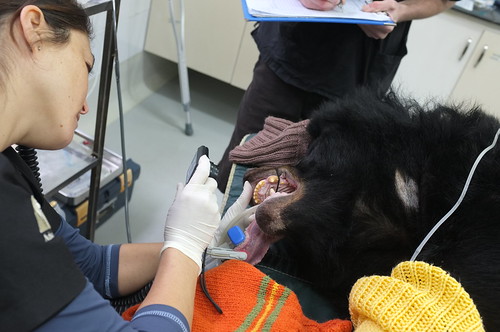
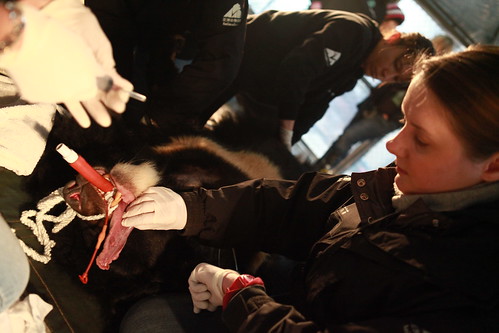
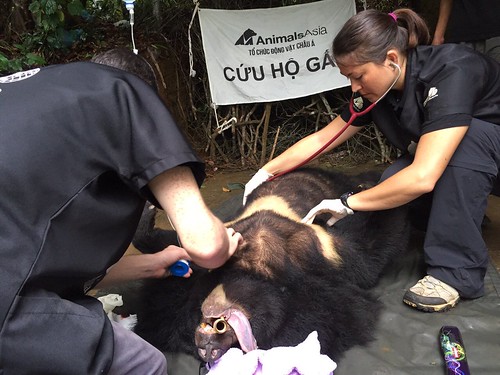
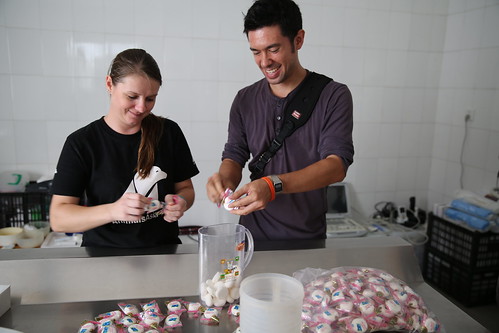
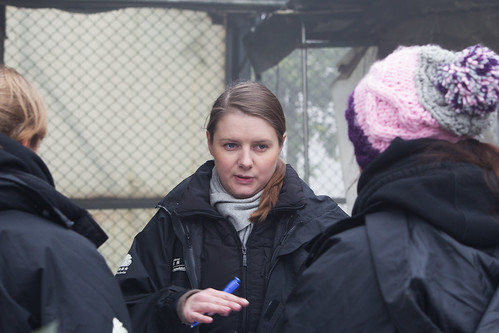




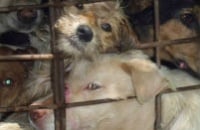 5 reasons the dog meat trade must end
5 reasons the dog meat trade must end
 New year, new home for Christmas the Bear!
New year, new home for Christmas the Bear!
 Veterinary welfare training – pain management
Veterinary welfare training – pain management